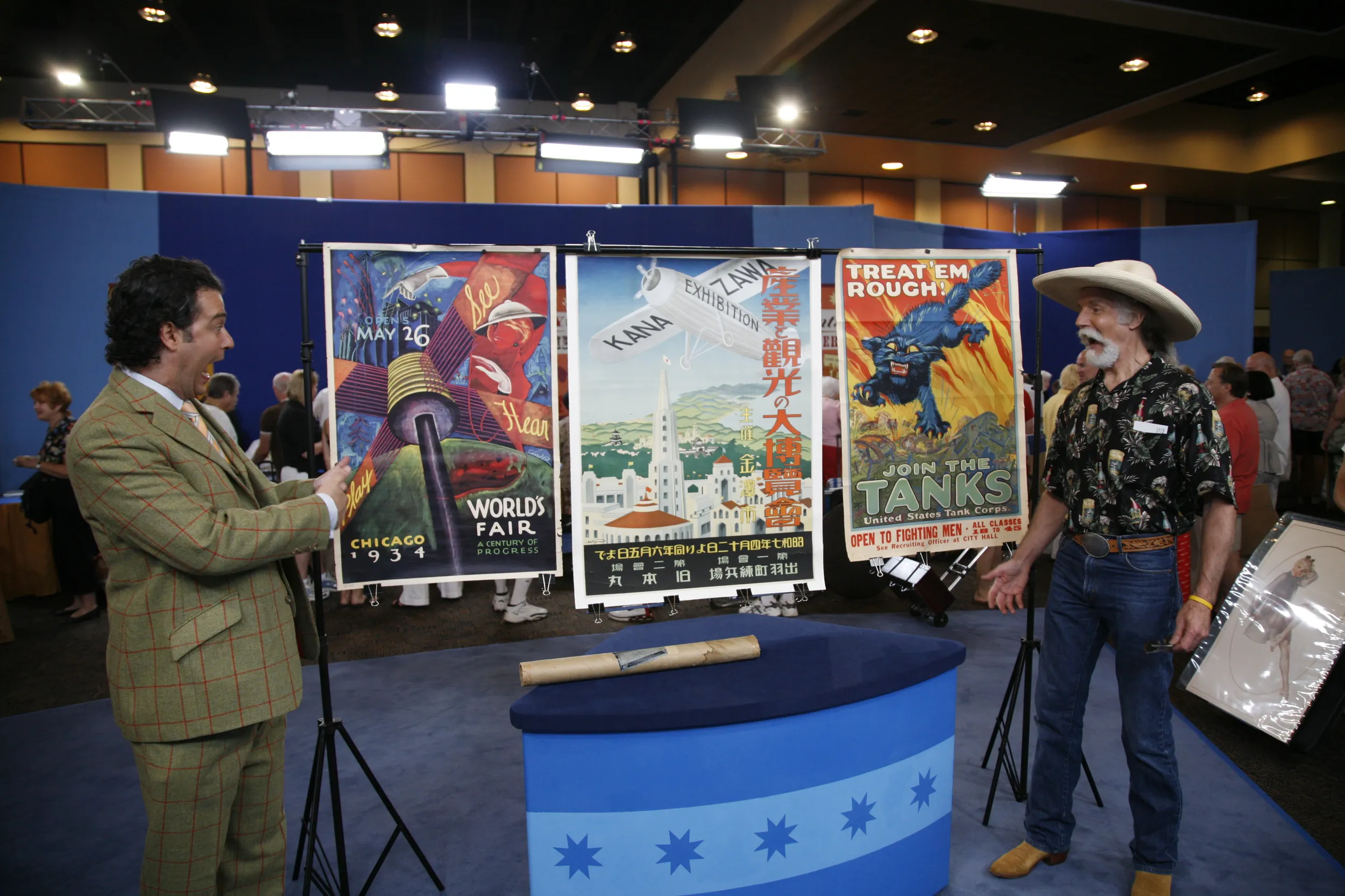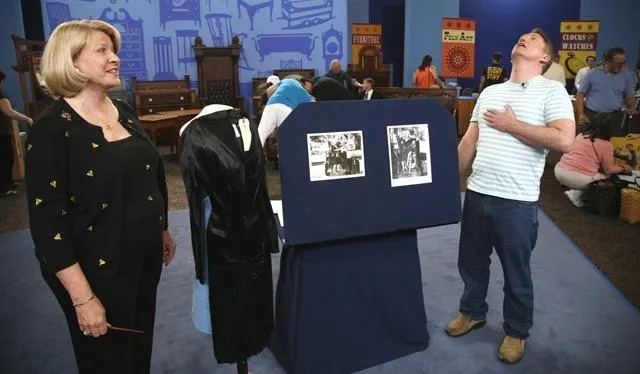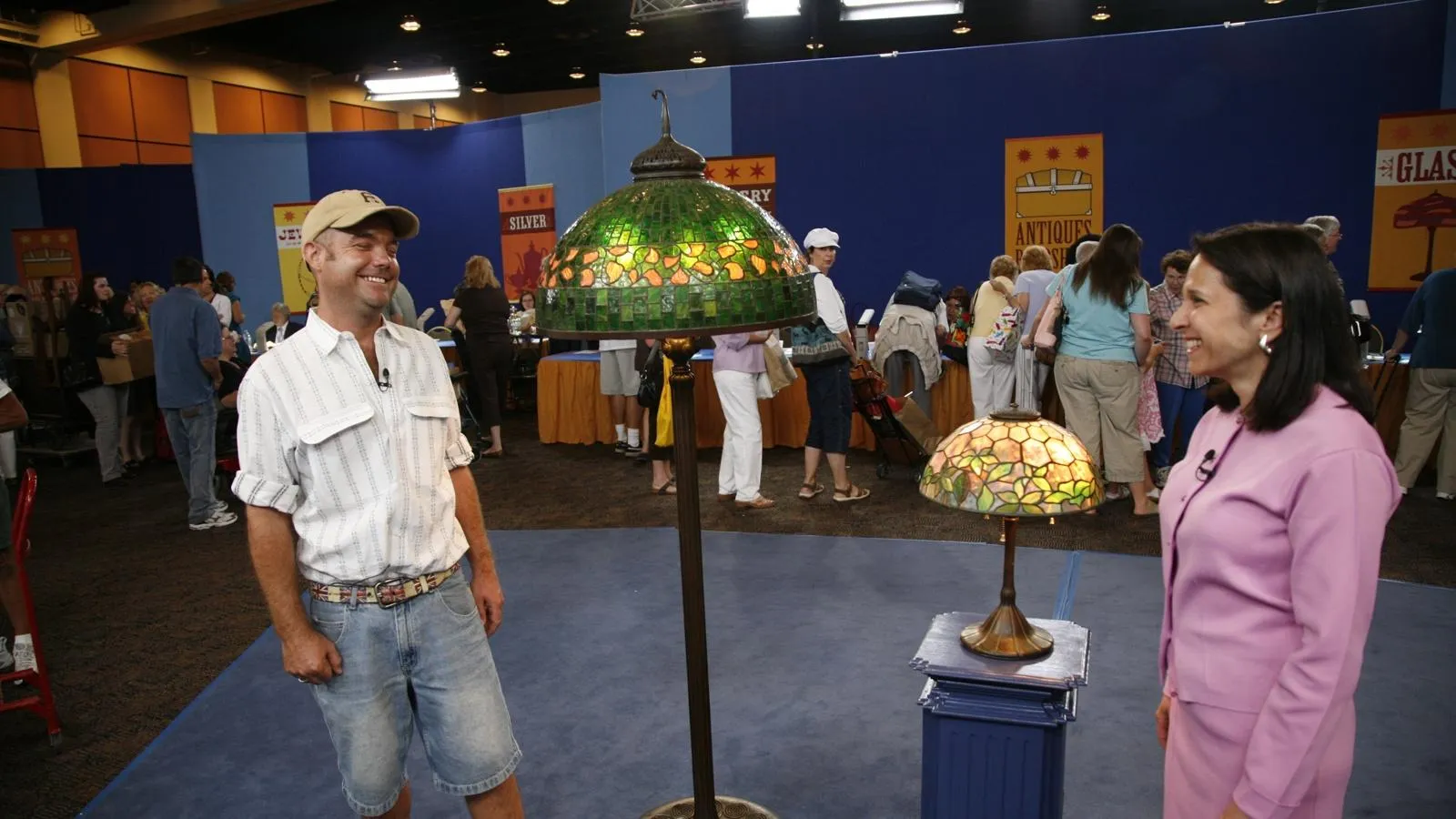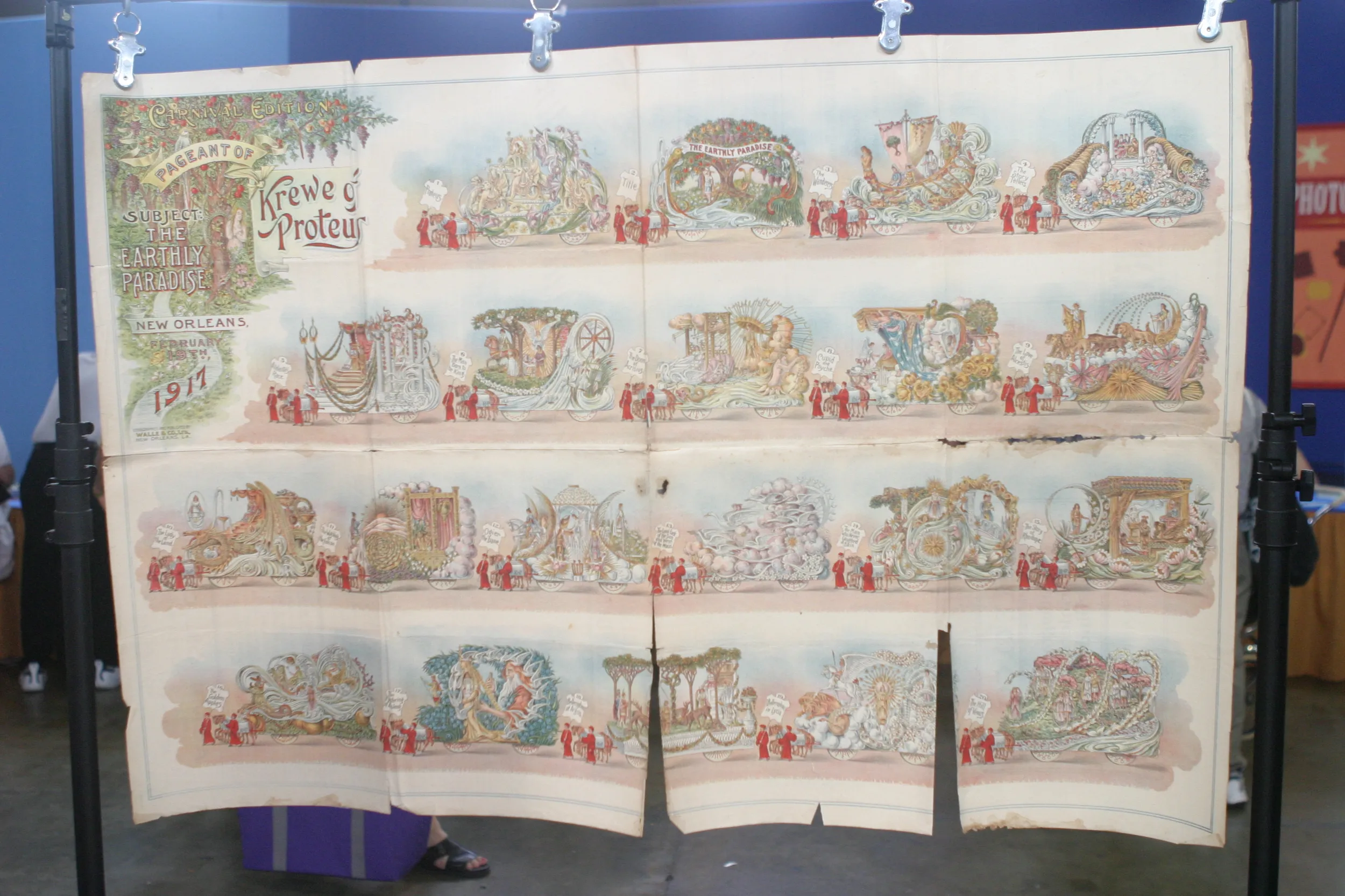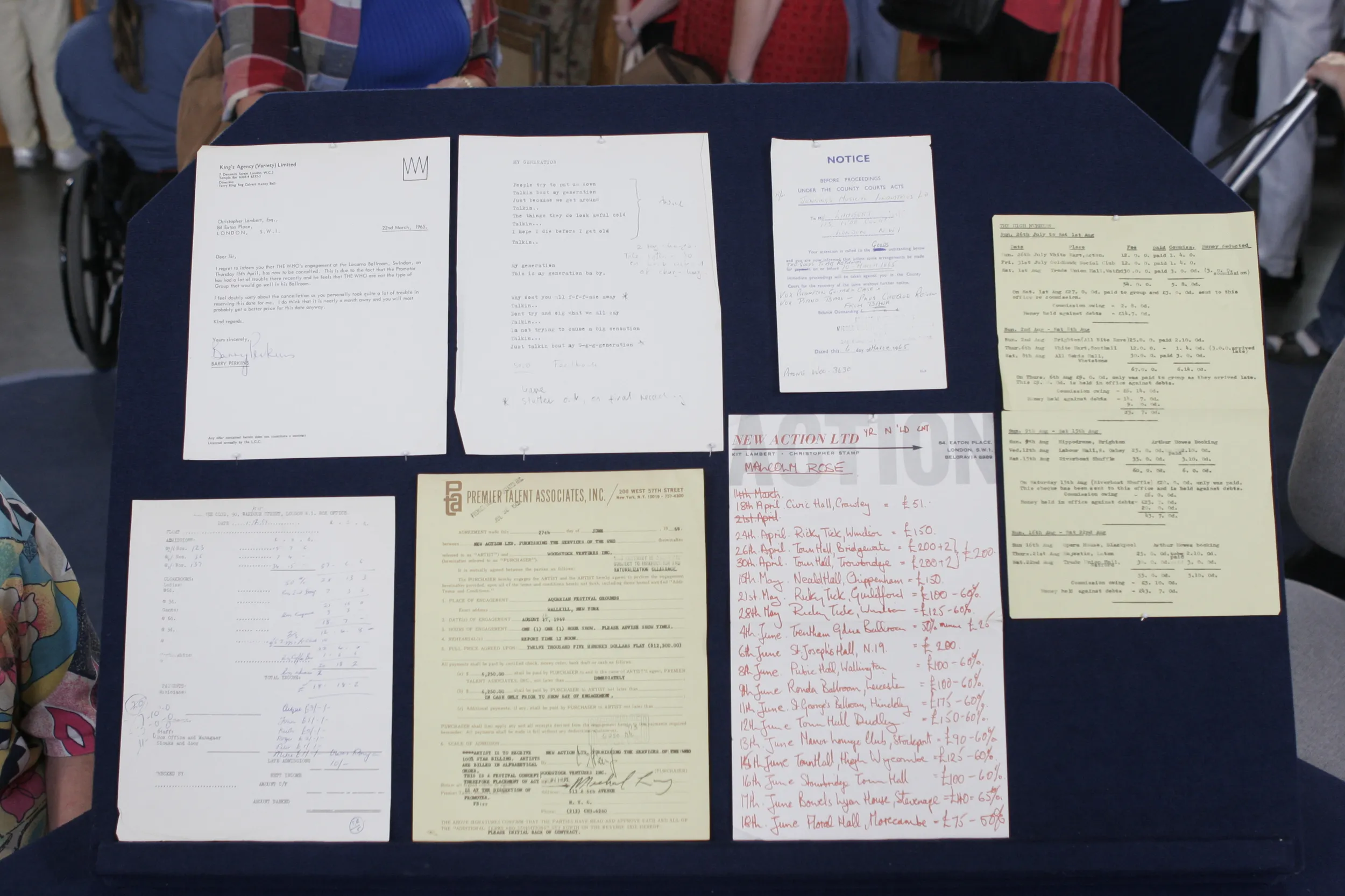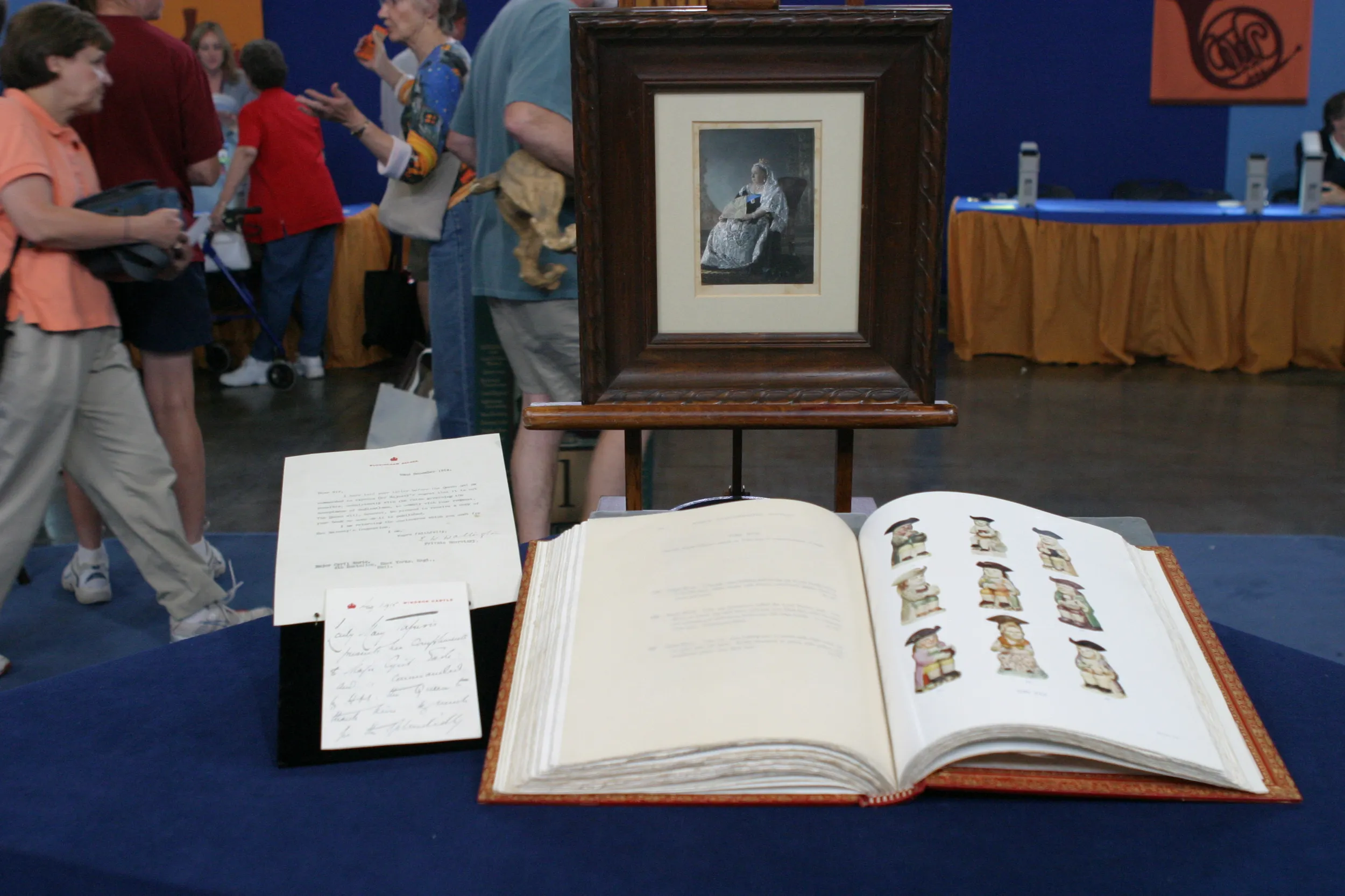GUEST: I bought them all at estate sales over the last 20 years, and, uh, that's about all I can tell you, really.
APPRAISER: You're somewhat of a poster enthusiast, right?
GUEST: Oh, I love them, yeah. I love, I love the graphics, so when I see something that grabs me, I usually try to buy it, yeah.
APPRAISER: Now, you've heard the, the expression "the good, the bad, and the ugly"?
GUEST: Right.
APPRAISER: Today, I sort of want to change that a little bit and work with the good, the better, and the best.
GUEST: I, I like that.
APPRAISER: I'd like to start with one right next to you. This is a very famous World War I poster enlisting men into the Tank Corps. And the cat that's featured was called Black Tom. He was the mascot of the Tank Corps.
GUEST: Okay.
APPRAISER: The Tank Corps was brand-new in the First World War. So this is a fairly important militarily historical poster. The poster actually exists in three different sizes, of which this is the largest. Moving closer toward me now, we have this poster for the Chicago World's Fair. There's something about this particular poster, though, that sets it apart from all other World's Fair posters that I've ever seen, and that is that it comes with the original tube, which has the original Chicago World's Fair sticker on it. Now, for people who watch the ANTIQUES ROADSHOW with some regularity, they know that anything that comes in an original package... Hubba hubba-- I mean, that's supposed to be a good thing, right? So we've had the good, the better-- now we're going to go to the best, which is the piece in the middle. Now, there's one really difficult issue about this poster in the middle. That's the language it's in-- it's in Japanese. Uh, not my mother tongue, uh, not something I've studied. And I know you've had trouble deciphering it, also.
GUEST: Absolutely.
APPRAISER: One of the great things about posters, though, is that they transcend words. And this is a very special Japanese Art Deco image, circa 1925-1930...
GUEST: Hmm.
APPRAISER: ...with an extraordinary depiction of an airplane flying over a Japanese peninsula. You may not be able to see it, but the ink is actually gilt silver-- a wonderful image. Now, as far as values on these go, beginning with the good... The World War I poster you paid how much money for?
GUEST: Uh, $250.
APPRAISER: At auction, I would estimate its value between $2,000 and $3,000.
GUEST: Great!
APPRAISER: Now, the World's Fair poster, how much did you pay for that? $12.
GUEST: $12.
APPRAISER: $12. At auction, an estimate $4,000 to $6,000.
GUEST: Yes!
APPRAISER: Now for the best, the Japanese Art Deco poster. I've never seen it before. Despite the fact that I can't read it, we know it's the, the Kanazawa Exhibition. That much I got. Great Art Deco image of a plane, gilt ink, uh, extremely rare. At auction... I'll tell you what. I will trade you the estimate if you let me wear your hat.
GUEST: (laughs)
APPRAISER: Now, we're talking.
GUEST: Yeah, let's get this in the back. Okay, Tex.
APPRAISER: At auction, I would estimate the Japanese poster at $5,000 to $7,500.
GUEST: Oh, excellent!
APPRAISER: Bringing the value of three, these three posters to a total of $11,000 to $16,500.
GUEST: (laughs): Perfect, I love it!
APPRAISER: I tip my hat to you, sir.
GUEST: No, no, you tip my hat to me!
APPRAISER: I tip your hat to you, sir.
GUEST: (laughs): Thank you.

